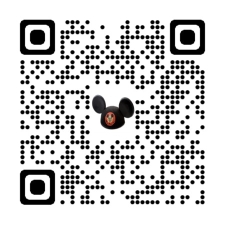
Real Human Bones Were Originally Used In Pirates Of The Caribbean Ride
ID:
TMS-5293
Source:
iflscience.com
Author:
Rachael Funnell
Dateline:
Posted:
Status:
Current
Human remains once populated the world-famous Pirates Of The Caribbean ride at Disneyland. Now replaced with models, the story goes that the fake alternatives available back when the ride was built in 1967 weren’t up to scratch, and so the park’s "Imagineers" made do with some authentic materials.
It might be shocking to consider in the modern day, but Disneyland’s use of real remains isn’t even the most recent example of human bones making it into places you wouldn’t expect. Real skeletons were also used in the 1982 film Poltergeist, to name one, a movie which viewers may recall features a lot of skeletons.
Snopes even did a breakdown of the Poltergeist rumor, confirming that human skeletons were used and at times without members of the cast even knowing. They report that in a TV interview, star JoBeth Williams said:
“In my innocence and naiveté, I assumed that these were not real skeletons. I assumed that they were prop skeletons made out of plastic or rubber. I found out – as did the whole crew – that they were using real skeletons, because it's far too expensive to make fake skeletons out of rubber. And I think everybody got real creeped out by the idea of that.”
The limitations of fake skeletons at the time similarly drove the decision to use real ones in Disneyland’s pirate-themed boat ride. According to Atlas Obscura, former Disney producer Jason Surrell revealed in his book Pirates of the Caribbean: From the Magic Kingdom to the Movies that it was thought “the faux skeletons of the period” were “just too unconvincing”.
Having already cost as much as the rest of the park combined to build, it seems that creating life-like skeletons was a step too far for the wardrobe departments. The bones were instead sourced from the University of California, Los Angeles (UCLA), and were real human remains.
Technology has since marched on and with it came a new era of startlingly convincing skeletal models that have replaced the remains housed in the ride’s earlier design. Surrell goes on to say that they were returned to their countries of origin and given a proper burial.
The trade of human remains continues to be a murky area of law in the United States, where mortician Caitlin Doughty – author of Will My Cat Eat My Eyeballs?: Big Questions From Tiny Mortals About Death – says “No federal law prevents owning, buying, or selling human remains, unless the remains are Native American."
"Otherwise, whether you're able to sell or own human remains is decided by each individual state. At least 38 states have laws that should prevent the sale of human remains, but in reality the laws are vague, confusing, and enforced at random."
Still, we can all ride a little easier knowing it's now (Plastic) Pirates Of The Caribbean.
Attractions Referenced In This Article:





MickeyMousePark.com TikTok Channel:

MickeyMousePark.com BlueSky Channel:

Copyright: (c) 1997-2025 by
ThrillMountain Software
MickeyMousePark.com is not associated in any official way with the Walt Disney Company,
its subsidiaries, or its affiliates.
The official Disney site is available at
disney.com





